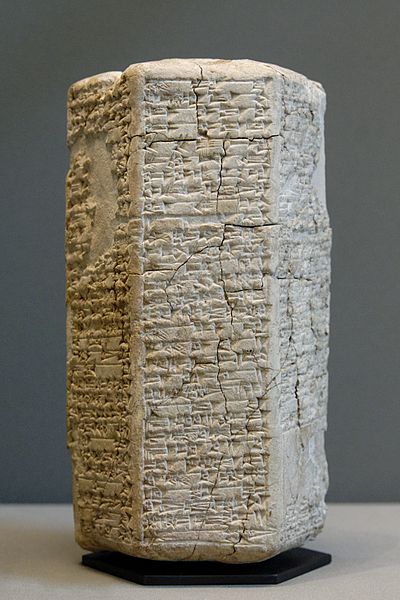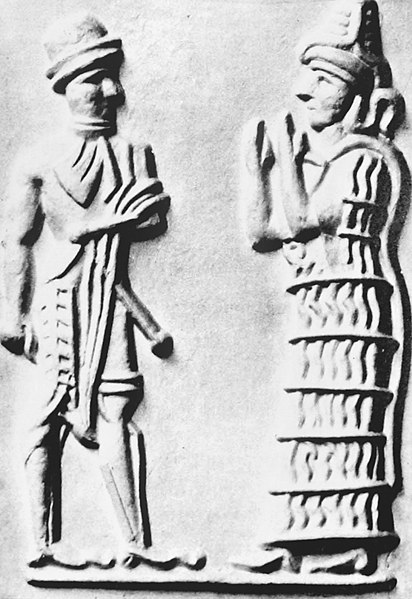The Dynasty of Isin refers to the final ruling dynasty listed on the Sumerian King List (SKL). The list of the Kings Isin with the length of their reigns, also appears on a cuneiform document listing the kings of Ur and Isin, the List of Reigns of Kings of Ur and Isin.
Cylinder seal and modern impression Presentation scene, c. 2000–1750 B.C. Isin-Larsa.
Cylinder seal, c. 1822–1763 B.C. Isin-Larsa.
A praise poem to Iddin-Dagān, King of Sumer. Cuneiform script inscribed on a clay hexagonal prism, currently located at the Musée du Louvre (dated to c. 1950 BC.)
The "Code of Lipit-Ištar" (dated to c. 1860 BC)
Isin (Sumerian: 𒉌𒋛𒅔𒆠, romanized: I3-si-inki, modern Arabic: Ishan al-Bahriyat) is an archaeological site in Al-Qādisiyyah Governorate, Iraq which was the location of the Ancient Near East city of Isin, occupied from the late 4th millennium Uruk period up until at least the late 1st millennium BC Neo-Babylonian period. It lies about 40 kilometers southeast of the modern city of Al Diwaniyah.
Looters at the site of Isin
Left: Cuneiform clay tablet. Old Babylonian, 1900-1700 BC Right: Sumerian cuneiform "foundation stone". This clay cone was embedded in a wall, and contains the deed of foundation of the city walls of Isin (Tell Bahriyat) by king Ishme-Dagan of Isin (1953-1935 BC)
A praise poem to Iddin-Dagān from the site, currently at Musée du Louvre
Seal of Dakiya, son of Isin king Damiq-ilishu, as a high official of Samsu-iluna, after the loss of his father's kingdom.







